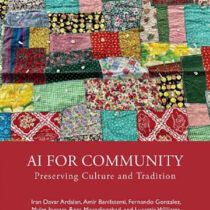Greek painting of the Thirties has been significantly marked by the work of a young generation of painters (the oldest of them 30, the youngest a mere 19-year-old in 1935) rather than by that of their peers who were middle-aged at the time. Notwithstanding the artistic vafue of this work, its emergence and especially the fast pace at which it almost overwhelmed the work of the previous generation can only be explained by criteria other than artistic and by factors outside the realm of art. It is equally significant that the critical discourse of the three decades that followed consolidated their predominance in that area. For quite a while before the Thirties the Greek bourgeois intelligentia had been emphasizing the necessity of a national art that would bear the marks of place and time as part and parcel of its aesthetics. This meant an endowing of artistic creation with ideological traits that would confirm the image of a cultural continuum for the Greek civilisation from antiquity to the present time. In this continuum the stages of Byzantine-to-present day folklore art were highlighted in a manner unprecedented heretofore. The horizon of expectation thus demanded forms that confirmed the bonds between the civilisation of the day and the one that had produced the glorious art of the Hellenic world. The young painters of the Thirties, Ghikas, Tsarouchis, Engonopoulos, Diamandopoulos, Moralis, not only complied with the horizon of expectation but virtually gave it its shape, through their work in the field of visual arts. They established what their peers had also done before them -though not as uniformly and clearly- that the formal characteristics of European Modernism such as flatness, distortion, deconstruction and a materialistic rather than psychological use of colours, were nearly all inherent features to the local tradition of Byzantine art and its popular tailpiece thereafter; they made them, somewhat impatiently, formal features of their vocabulary. In this “pecking” from Modernism as well as from the local tradition they went so far as to compile a whole language of motifs of “Greekness” traceable in the work of almost everyone of them, whether it had a turn towards fauvism, cubism or surrealism – always at a remove. A stream of art that was influenced by the Marxist doctrine was also born in the Thirties but the Zdanov-Stalinist model of Socialist realism made it too late for that art to be revolutionary in any respect worthy of the name. On the other hand, the stream of a modernist art that did not “colour” its expression with ideological traits -and in this way undermine its avant-garde character- was represented, in the Thirties, by two eminent artists whose work had reached maturity at the time, viz. Theophrastos Triantafyllidis and Giorgos Bouzianis. However, their work, lacking as it was in motifs that underlined any “Greekness”, was doomed to a marginal existence then – and to a great extent even today.
A mirror in oblique perspective Postlude adaptations of European avant-garde in the Greek art of the Thirties
14 Aug 2012
by Archaeology Newsroom
- A
- A
- A


